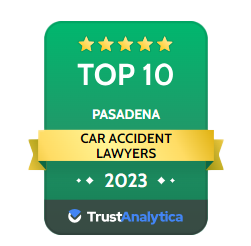While uncommon, music festival injuries can occur. Figuring out who’s responsible for your injuries depends on the circumstances of your injury. In most cases, the music festival organizer may be held accountable. Learn about personal injury liability and if seeking advice from an accident attorney is right for you.
What is The Duty of Care at a Music Festival?
As a festival attendee, you expect a music event to be safe. The event organizers must keep safety measures in position and enough safety staff to respond to emergencies. This is where the task of treatment enters into play; it is lawful for marketers and coordinators to ensure their patrons’ safety.
To avoid premises liability, festival coordinators must assess risks, inform emergency services, address legal and management issues, and fulfill all legal obligations before hosting any event.
Music festivals are a lot of fun until a person experiences a severe injury. These laws are put into place to assist marketers in maintaining a “duty of care” while minimizing any potential risk associated with their music festival.
Common Injuries at a Music Festival
Rowdy crowds, mosh pits, and small spaces are a recipe for disaster. In between dodging fellow music fans and battling sunburn, the last thing anybody wants is to suffer from broken bones or any other type of significant injury.
Nothing is worse than getting stuck in the middle of a mosh pit without any exit. Crowd surfing seems like fun until nobody catches you, and unexpectedly, you’re trampled under several people. One minute you’re having the time of your life, and also, in a blink of an eye, you experienced a severe injury to your back, neck, and head.
Below are a few other injuries that can happen at music festivals:
- Falling of equipment on individuals that are not correctly placed/secured.
- Back, head, or neck injuries are caused by moshing or crowd surfing.
- Being hit by glass bottles thrown by others.
- Trips or falls that happen on walkways that haven’t been adequately safeguarded.
- Deafness or other hearing problems.
If you have suffered an injury at a musical festival, turn to Joe I. Zaid & Attorneys for legal advice today!
Is The Festival Responsible?
A festival organizer’s obligation is exclusively focused on the specific scenarios of a person’s injury. With 10s of countless music fans joining together in jampacked atmospheres and abusing alcohol, adrenaline often tends to heighten. Also, regrettably, concert venues occasionally tend to favor unsavory accidents.
Before making an injury case, take a look at how a festival coordinator could be accountable:
- Festival staff members over-serve customers
- Lack of proper security/understaffed
- Not enough blockages or barriers cause the flow of people to stampede
If you suffered from severe injuries, the festival organizers could be accountable for your damages.
Actions To Prove Your Injuries Against a Music Festival Organizer
Four things must be justified to prove your case for recovery against the music festival coordinators:
Duty
The music festival coordinators have a duty to keep all their festival-goers safe. Proper regulations and laws are put into place to prevent attendees from getting broken bones or other serious injuries.
Breach
To make an injury case, you have to show a breach of task that occurred at the time of injury. For instance, if the organizers failed to work with a fair number of individuals, this might confirm a breach in having an inadequate number of individuals keeping an eye on the facilities.
Causation
Just because oversight took place doesn’t necessarily indicate you have a claim. It would help if you proved the negligence of the organization’s actions that caused your injury. Such acts would include whether the company might have anticipated the accident that caused the injury to festival-goers.
Damages
The damages are the results proceeding the injuries acquired through the coordinator’s carelessness in your case. You will need to justify these damages in the form of medical expenses, lost income, or workers’ compensation. Even pain and suffering and psychological distress can be categorized as damages as long as there is written evidence supplied from a psychological health and wellness specialist to support your case.
What to do if You Were Injured at a Music Festival
Right away, jot down detailed notes of the situation:
- What occurred
- Where did it happen, and
- Who was involved
- Find out who owns the event and concert venue.
- Collect your proof– This could be pictures of the venue or any type of hazards nearby.
- Keep your ticket to the festival and any medical invoices or paperwork: emergency room visits, ambulance services, x-rays, rehabilitation, laboratory examinations, etc.
Get in touch with the knowledgeable group of accident attorneys, Joe I. Zaid & Associates, to discuss your case.
Crowd Surge Kills at Least 8 at Houston Music Festival
Fans attending a Houston music festival surged toward the stage during a performance by rapper Travis Scott, setting off panic in the group of tens of thousands. At least 8 individuals were killed and many were injured, authorities claimed.
The chaos unfolded Friday night at Astroworld, a sold-out, two-day event at the NRG Park stadium. An estimated 50,000 people were in attendance.
Seventeen individuals were taken to hospitals, including 11 who were in cardiac arrest, Peña said, and also “many individuals” were injured.
#ASTROWORLDFest please call 3-1-1 or 713-837-0311 or go to the reunification center at 8686 Kirby Dr, Houston, TX 77054
Causes of Crowd Surge Injuries
Poor Crowd Management
One major cause of crowd surge injuries is poor crowd management. This can be attributed to a variety of factors, including:
- Lack of proper planning: Event organizers may fail to anticipate the number of attendees, leading to overcrowding and insufficient resources to handle the crowd.
- Insufficient security personnel: A lack of adequate security staff can hinder effective crowd control, increasing the risk of injuries.
- Inadequate communication between event organizers and security: Poor communication can result in disorganized responses to crowd issues, potentially escalating problems and increasing the risk of injuries.
Venue Layout and Design
The layout and design of a venue can also contribute to crowd surge injuries. Factors to consider include:
- Narrow exits and entrances: When exits and entrances are too narrow, they can become bottlenecks, making it difficult for people to move in and out of the venue. This can lead to dangerous congestion and increased risk of injuries.
- Limited space for crowd movement: Insufficient space for attendees to move around can result in overcrowding, making it difficult for people to escape dangerous situations or avoid being trampled during a crowd surge.
Panic Situations
Panic situations can also lead to crowd surge injuries. These situations may arise due to:
- Emergencies, such as fires or shootings: In an emergency, people may panic and try to flee the scene, often resulting in a stampede that can cause serious injuries.
- Rumors or misinformation leading to panic: False information or rumors can cause attendees to panic, leading to a dangerous crowd surge. For example, a rumor about an active shooter or a bomb threat could cause people to flee in fear, potentially causing injuries.
Examples of Crowd Surge Injuries
Music Festivals
The Love Parade disaster in Germany in 2010 is a tragic example of a crowd surge injury at a music festival. A massive crowd gathered for the electronic music festival, and due to poor planning and inadequate crowd management, a panic ensued, resulting in 21 deaths and more than 500 injuries.
Another devastating incident occurred in 1989 at the Hillsborough disaster in England. During a soccer match between Liverpool and Nottingham Forest, overcrowding in the stands led to a fatal crush, killing 96 people and injuring hundreds more. The tragedy led to significant changes in stadium design and crowd management practices.
Sporting Events
Heysel Stadium disaster in Belgium in 1985 is another example of a crowd surge injury at a sporting event. During the European Cup final between Liverpool and Juventus, a riot broke out, causing a wall to collapse and resulting in the death of 39 people and injuries to more than 600 others. This tragedy led to improvements in stadium safety and crowd control measures.
In 2001, the Ellis Park Stadium disaster in South Africa occurred during a soccer match between the Kaizer Chiefs and Orlando Pirates. Poor crowd management and insufficient security led to a stampede, killing 43 people and injuring many others. This incident highlighted the need for better crowd control and safety measures at sporting events.
Religious Gatherings
Crowd surge injuries can also occur during religious gatherings. In 2015, a stampede occurred during the Hajj pilgrimage in Mina, Saudi Arabia. The stampede resulted in the death of more than 2,400 people and numerous injuries. This tragic event emphasized the importance of proper crowd management and safety measures during large-scale religious events.
Another example is the Sabarimala temple stampede in India in 2011. During a religious festival at the temple, a panic ensued, leading to a stampede that killed 106 people and injured many more. This incident highlighted the need for better crowd management and safety precautions at religious gatherings.
Legal Implications of Crowd Surge Injuries
Determining Liability
When a crowd surge injury occurs, one of the first steps in the legal process is determining who is liable for the incident. Several potential parties could be held responsible, including:
1. Event organizers: Those who planned and executed the event may be held liable if they fail to implement proper safety measures, such as hiring enough security personnel or creating a safe venue layout.
2. Venue owners: The owners of the venue where the event took place may also be held responsible if they did not maintain a safe environment for attendees or if they were aware of potential hazards but failed to address them.
3. Security companies: If a security company was hired to manage the crowd and ensure safety, they could be held liable if they failed to protect attendees from harm adequately.
Negligence Claims
In many cases, crowd surge injuries result from negligence by one or more of the abovementioned parties. To establish negligence, the injured party must prove the following elements:
1. Duty of care owed to attendees: The responsible party had a legal obligation to ensure the safety of the event attendees. This duty of care can arise from a contractual relationship, such as an agreement between the event organizer and the security company, or from a general obligation to provide a safe environment for those attending the event.
2. Breach of duty resulting in injury: The responsible party failed to fulfill their duty of care by not taking necessary precautions or adequately addressing known risks. This breach of duty must be directly linked to the injuries sustained by the victim.
3. Causation and damages: The injured party must demonstrate that their injuries were directly caused by the responsible party’s breach of duty and that they suffered damages as a result. These damages can include medical expenses, lost wages, and pain and suffering.
In conclusion, understanding the legal implications of crowd surge injuries is crucial for both event organizers and attendees. Determining liability and pursuing negligence claims can be complex, but doing so is essential for holding responsible parties accountable and ensuring that proper safety measures are implemented in the future.
Role of a Crowd Surge Injury Attorney
Investigating the Cause of the Injury
A crucial aspect of a crowd surge injury attorney’s role is to investigate the cause of the injury. This involves gathering evidence, such as photographs, videos, and any available documentation related to the incident. Additionally, the attorney will interview witnesses at the event to better understand what transpired and how the injury occurred.
Establishing Liability
Once the cause of the injury has been determined, the attorney will work on establishing liability. This involves identifying the responsible parties, including event organizers, venue owners, and security companies. The attorney will need to prove negligence on the part of these parties, demonstrating that they failed to uphold their duty of care towards the attendees, resulting in the injury.
Seeking Compensation for the Injured
After establishing liability, the crowd surge injury attorney will seek compensation for their client. This can include medical expenses incurred due to the injury, lost wages due to the inability to work, and compensation for pain and suffering. The attorney will work diligently to ensure that their client receives the maximum compensation possible, helping them recover both physically and financially from the incident.
Prevention of Crowd Surge Injuries
Better Crowd Management Strategies
One of the essential steps in preventing crowd surge injuries is implementing better crowd management strategies. This includes ensuring there are adequate security personnel present at events to monitor and control the crowd. Security staff should be well-trained and able to handle various situations that may arise during events. Proper communication between event organizers and security is crucial for effective crowd management. Organizers should provide clear instructions and guidelines to security personnel, while security should keep organizers informed of any potential issues or concerns that may arise during the event.
Improved Venue Design
Another key aspect of preventing crowd surge injuries is improving venue design. This can be achieved by creating wider exits and entrances to facilitate smoother crowd movement and reduce the risk of bottlenecks or overcrowding. In addition, venues should have more space for crowd movement, including open areas where attendees can disperse in case of an emergency or when they need a break from the main event. Proper signage and clear pathways can also help guide attendees and prevent confusion or panic in crowded situations.
Educating the Public on Safe Behavior During Crowded Events
Finally, educating the public on safe behavior during crowded events can significantly prevent crowd surge injuries. Attendees should be aware of the potential risks of attending large events and take precautions to protect themselves and others. This may include staying alert and aware of their surroundings, following instructions from event organizers and security personnel, and knowing the location of emergency exits. Promoting a culture of safety and responsibility among event attendees can significantly reduce the likelihood of crowd surge injuries.
The Bottom Line
In conclusion, crowd surge injuries can have devastating consequences for those involved. They often result in significant physical and emotional trauma and financial burdens due to medical expenses and lost wages. As such, it is crucial for individuals who have suffered injuries in a crowd surge to seek the assistance of a skilled and experienced crowd surge injury attorney. These legal professionals play a vital role in investigating the cause of the injury, establishing liability, and seeking compensation for their clients.
Furthermore, there is a pressing need for improved crowd management and injury prevention strategies. Event organizers, venue owners, and security companies must work together to implement better crowd management techniques, such as providing adequate security personnel and ensuring proper communication between all parties involved. Additionally, venue design should be optimized to allow for easier crowd movement and prevent bottlenecks that can lead to dangerous surges. Public education on safe behavior during crowded events is also essential to minimize the risk of injuries.
By addressing these issues and prioritizing the safety of event attendees, we can work towards reducing crowd surge injuries and their devastating effects on individuals and their families.
Get in Touch With Joe I. Zaid & Associates If You’ve Been Injured at a Music Festival
From Houston, Texas, or wherever you go see musicians perform, personal injury cases do not have to be tough. Give the professionals, Joe I. Zaid & Associates a call today for a free consultation at (346) 756-9243.




